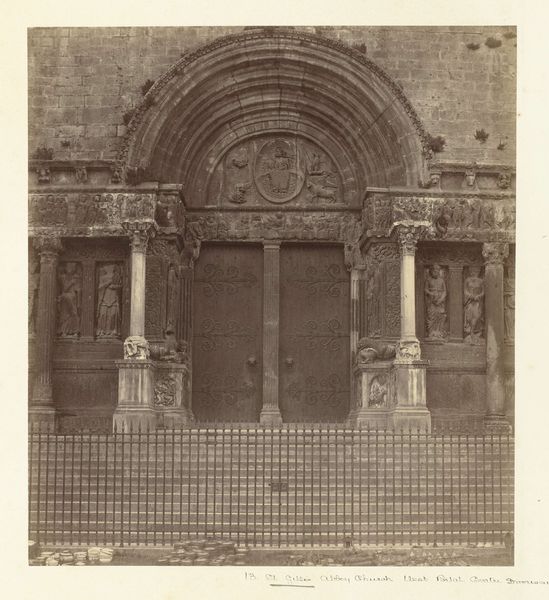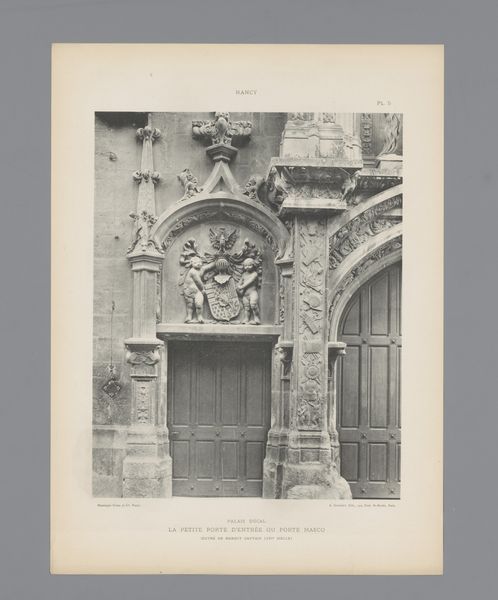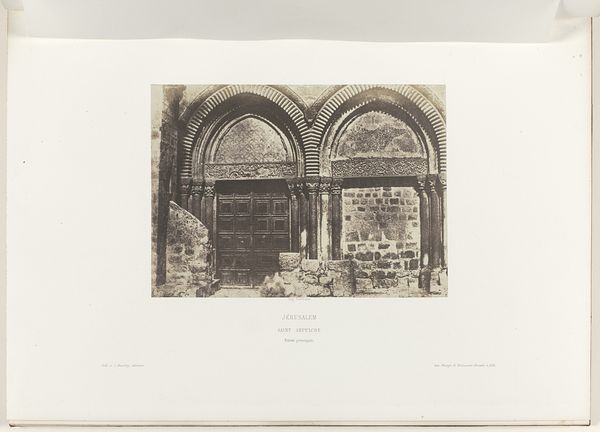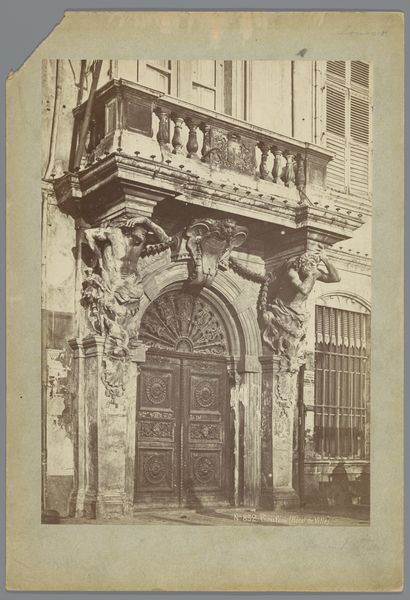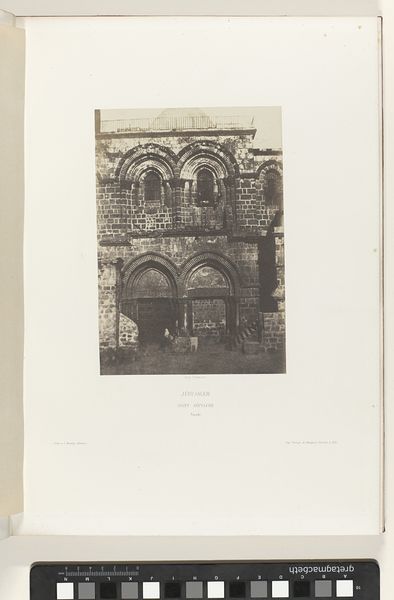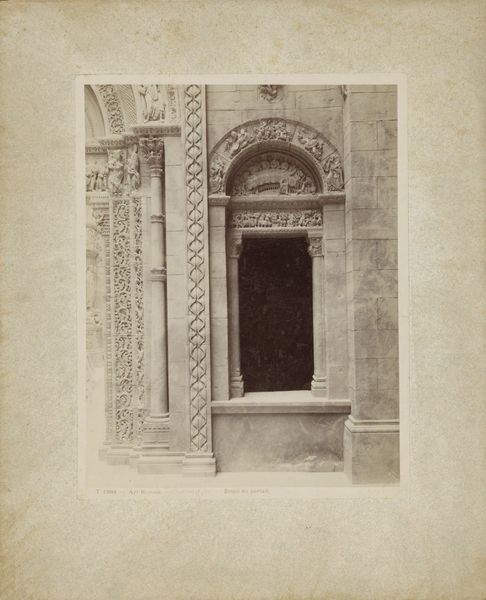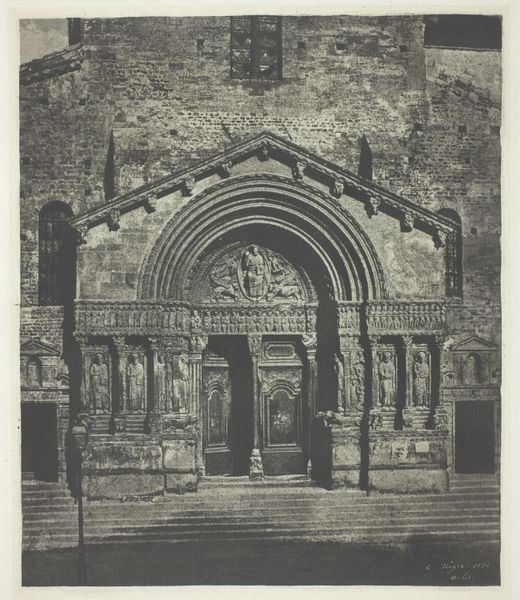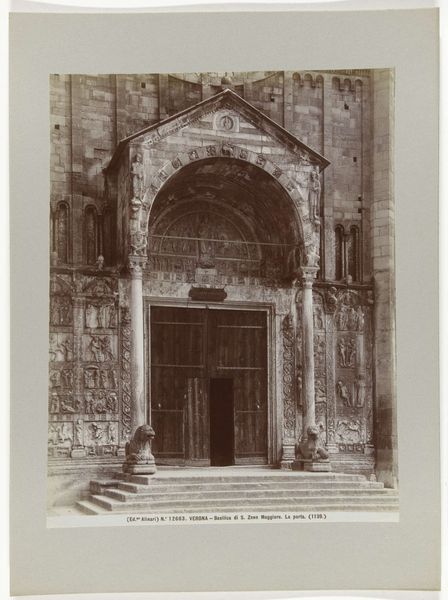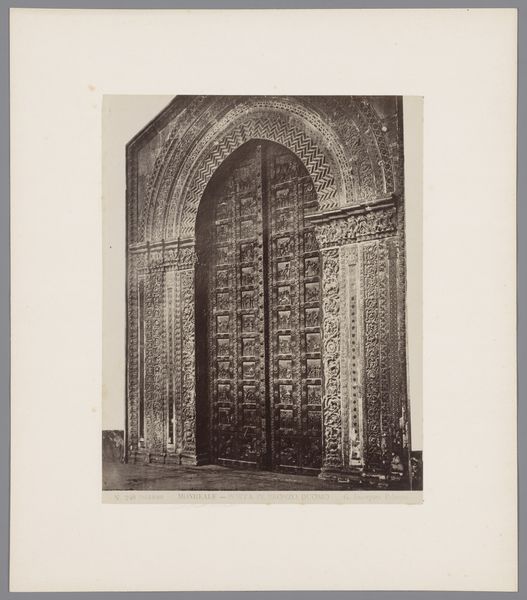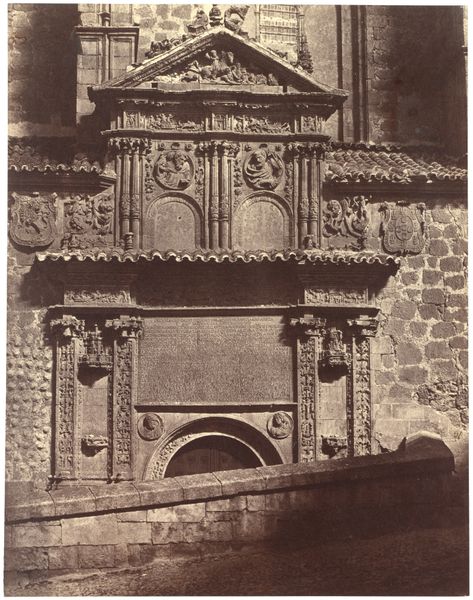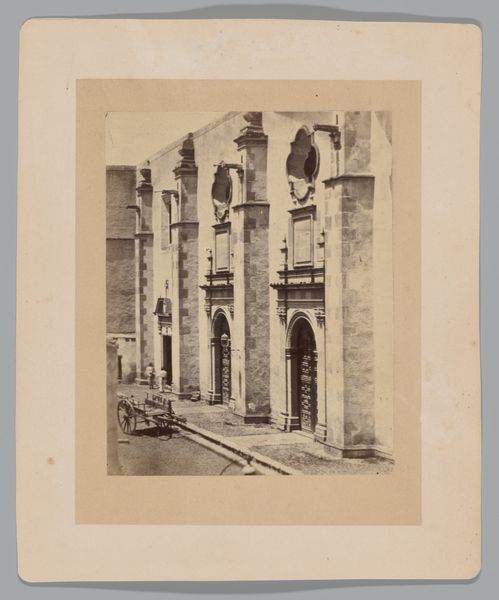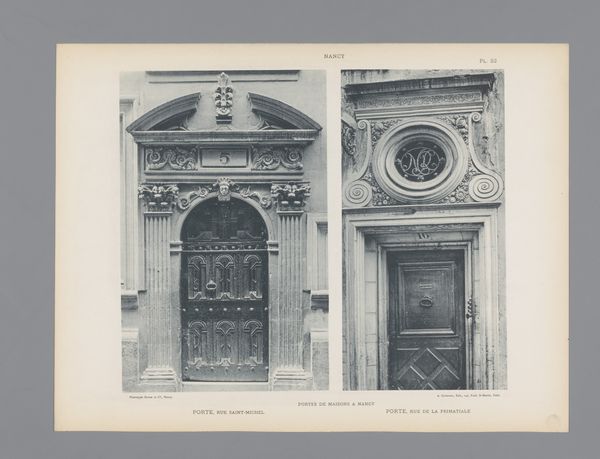
Dimensions: image: 40.3 x 31.2 cm (15 7/8 x 12 5/16 in.) mount: 64 x 48.8 cm (25 3/16 x 19 3/16 in.)
Copyright: National Gallery of Art: CC0 1.0
Charles Clifford made this photograph of the Puerta de Santa Cruz in Toledo, Spain, sometime in the mid-19th century. The photographic process itself is key to understanding this image. Clifford was a master of the wet collodion process, a demanding technique that required coating a glass plate with chemicals, exposing it in the camera while still wet, and then developing it immediately. Look closely, and you can see how the texture of the stone is rendered with incredible detail, almost hyperreal, yet the whole is bathed in a soft, sepia tone, a signature of early photography. The amount of labor involved is significant, from the preparation and execution of the photograph itself, to the skilled stone carving of the original portal. This wasn't a snapshot. Clifford’s work was painstaking. By emphasizing the labor and material presence inherent in both the photograph and the architecture it depicts, Clifford invites us to consider the social and cultural values embedded in these forms of production. It bridges what we think of as fine art, photography, and the more workaday realm of architecture.
Comments
No comments
Be the first to comment and join the conversation on the ultimate creative platform.
